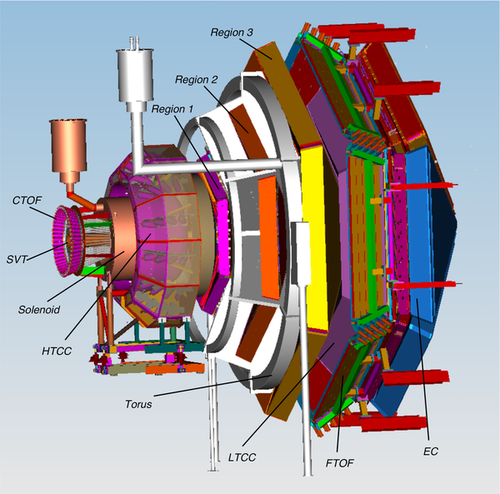Difference between revisions of "Engineering Run"
Jump to navigation
Jump to search
| Line 92: | Line 92: | ||
* At the end of each run, follow the DAQ restart sequence "end run", "abort", "reset", "download", "prestart", "go". The DAQ rate should be 2 -3 kHz (this includes a 1 kHz pulser). After DAQ prestart is complete reboot the scaler IOCs with the command: iocjscalerRestartAll.sh. Note: After each step, make sure it is complete in the Run Control message window. If a roc has crashed, find which one it is an issue a roc_reboot command and try again. Contact the DAQ expert if there are any questions. | * At the end of each run, follow the DAQ restart sequence "end run", "abort", "reset", "download", "prestart", "go". The DAQ rate should be 2 -3 kHz (this includes a 1 kHz pulser). After DAQ prestart is complete reboot the scaler IOCs with the command: iocjscalerRestartAll.sh. Note: After each step, make sure it is complete in the Run Control message window. If a roc has crashed, find which one it is an issue a roc_reboot command and try again. Contact the DAQ expert if there are any questions. | ||
| − | * | + | * The accelerator will be down today to work on the 5th pass separator. Work to deliver beam simultaneously to Halls B and D will then commence. |
| − | + | * When we are cleared by management, ramp the solenoid to 100% field and the torus to 85% field with reversed (negative) polarity. Ensure that the tagger magnet is ramped to its nominal field. | |
| − | * | + | * For the tuning phase during accelerator studies the beam should be tuned to the Hall B tagger dump yoke. Ensure that all CLAS12 detectors are turned off. |
| − | * | + | * Follow the standard procedures for tuning the beam in the upstream Hall B beamline. |
| − | + | * When acceptable beam is established, complete the test plan to commission the Moller polarimeter. | |
| − | * | + | * Ask the accelerator to turn off the tagger magnet and follow the nominal degaussing procedure. |
| − | + | * Tune the beam to the Faraday Cup following the standard procedures with a 1 nA beam. | |
| − | * | + | * When the beam tune is acceptable and stable, turn on ECAL and FTOF. If the rates are acceptable, turn on the remaining detectors. Record detector rates and DC currents in the logbook. |
| − | ** | + | * If rates and currents are acceptable, increase the beam current to 5 nA. Record detector rates and DC currents in the logbook. |
| − | * | + | * Start the DAQ with the production electron trigger (trigger_electron.trg). Take data for 4 hours. |
| − | * | + | * Continue work on trigger development/optimization. |
| + | * Work on setting detector thresholds and timing windows. | ||
| + | * Take a data run with the production electron trigger. Take data for 4 hours. | ||
| + | * If beam is stable, complete a luminosity scan at 10 nA, 30 nA, 50 nA, 70 nA. Record detector rates, currents, and DC occupancies at each luminosity. | ||
* Perform DC HV/threshold study with settings #8, #9, #9 for R1, R2, R3 with thresholds of -20 mV, -30 mV, -30 mV. | * Perform DC HV/threshold study with settings #8, #9, #9 for R1, R2, R3 with thresholds of -20 mV, -30 mV, -30 mV. | ||
Revision as of 12:35, 18 December 2017
[edit]
Shift ScheduleShift ChecklistHot CheckoutBeam Time Accounting |
Manuals |
Procedures |
JLab Logbooks
|
|
| |||||||||||||||||||||||||||||||||||||||||||||||||||||||||||||||||||||||||||||||||||||||||||||||||||||
- Note, all non-JLab numbers must be dialed with an area code. When calling from a counting-house landline, dial "9" first.
- To call JLab phones from outside the lab, all 4-digit numbers must be preceded by 757-269
- Click Here to edit Phone Numbers. Note, you then also have to edit the current page to force a refresh.
Click Here to edit Phone Numbers. Note, you then also have to edit this page to force a refresh.
CLAS12 Engineering Run, Fall 2017
Beam energy 10.6 GeV (5 pass)
Torus : +3200 A (85% field), Solenoid: 2416 A (100% field), full target;
Important: Document all your work in the logbook!
Remember to fill in the run list at the beginning and end of each run (clas12run@gmail.com can fill the run list)
RC: Daniel S. Carman
- (757) 575-7540
- 9 575 7540 from Counting Room
- carman@jlab.org
PDL: Eugene Pasyuk
- (757) 876-1789
- 9 876-1789 from Counting Room
- pasyuk@jlab.org
Run Plan:
|
General Instructions:
Beam Tuning:
When ready to get beam, Turn all beamline devices ON, turn all CLAS12 detectors OFF (including SVT)
|
Every Shift:
|
Every Run:
|
|---|
Webcams |
Manuals |
Epics on the web
|
